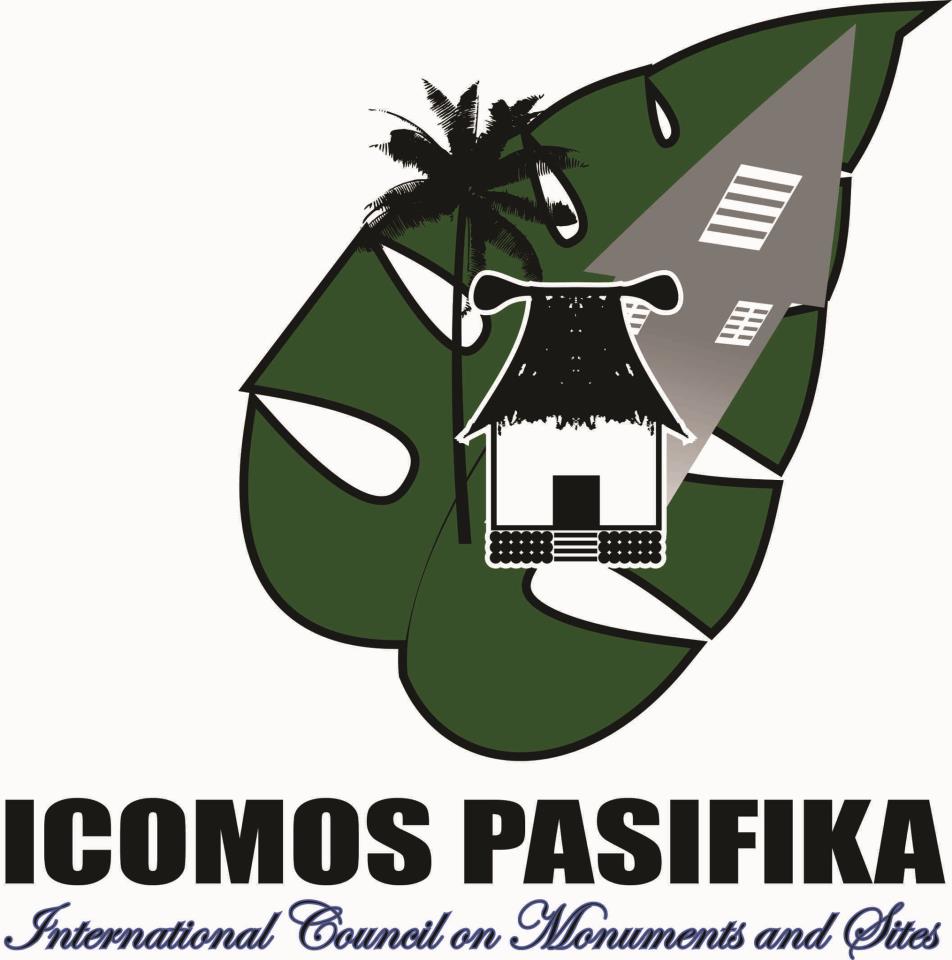This conference will explore the four main themes below (click on each theme to take you to this section):
Theme 1: Heritage at Risk – Climate Change and Disasters
Theme 2: Cultural Landscape Practice and Management
Theme 3: Diverse Communities – Intangible Heritage
Theme 4: Heritage as a Pillar of Sustainable Development
Theme 1: Heritage at Risk – Climate Change and Disasters
Heritage – natural and cultural, tangible and intangible, fixed and movable – is increasingly at risk of severe climate change effects (i.e. increased precipitation, flooding, droughts, sea level rise, desertification), natural (such as earthquake, cyclone, bushfires) and man-made (i.e. conflicts) hazards. In some cases this has led to displacement, annihilation loss of identity, meanings and association with communities. These trends are predicted to worsen and their adverse impacts to greatly increase. However, heritage – as both a driver and an enabler of inclusive, safe, resilient and sustainable cities and human settlements – offers knowledge and practices constituting of invaluable repository of information and strategies to address climate change and other hazards in terms of mitigation, resiliency planning and adaptation.
Safeguarding our heritage ensures that places we feel connected to are protected for current and future generations. Currently, there are a number of national and international professional bodies promoting the conservation and protection of heritage and working to mobilize the Heritage Community to help meet the challenge of climate change, natural and man-made hazards.
As follow-up to COP23 (23rd Conference of the Parties to the United Nations Framework Convention on Climate Change – UNFCC), presided over by the Republic of Fiji, key stakeholders discussed actions and targets to mitigate and adapt to the effects of climate change. In addition, many organisations around the world are seeking to implement and further develop policies and institutional frameworks such as the Burra Charter, Sendai Framework for Disaster Risk Reduction, the UN Sustainable Development Goals, the New Urban Agenda, the Paris Agreement and Kyoto protocol to address natural and man-made hazards, capacity building for risk reduction, preparedness, protection and early recovery as it affects heritage within and across national boundaries.
We seek responses to some of the issues highlighted below:
· Measuring and valuing the impacts of climate change and other hazards on heritage including non-economic dimensions of loss and damage
· Strategies for addressing loss and destruction of heritage values including documentation of memories and histories of heritage
· Assessment of tools and implementations of international frameworks and national policies on disaster risk reduction
· Valorising indigenous knowledge as tool for response for reduction of people’s vulnerability to hazards and contributions of heritage in strengthening disaster risk management
· Risk preparedness – before and after and emergency. Why is it important to protect cultural heritage?
Theme 2: Cultural Landscape Practice and Management
Across our region, a wide variety of cultural landscapes and seascapes, including associative, evolved and designed landscapes evidence a diverse range of human activities and relationships with natural environments. These are lands and seas patterned by the cultural practices of Indigenous and non- Indigenous communities, historical colonisation, and urban and commercial expansions. This diversity is evident in an impressive range of the World Heritage cultural landscapes including Tongariro National Park Aotearoa/New Zealand; Chief Roi Mata’s Domain, Vanuatu; Taputapuatea, French Polynesia; Kuk Early Agricultural site in PNG; Panahanamokuakea in Hawaii and in Budj Bim Cultural Landscape, Australia.
As expressions of the inter-relationships between people and environment, cultural landscapes and seascapes present particular challenges for management not least because of their scale and diverse values. All cultural landscapes evolve but their management is increasingly complex in the face of a wide range of potential impacts including intergenerational change, new land uses, increasing population, conflict, extractive industries such as mining, forestry and fishing, and climate change. The narratives of cultural ties across separated places and to natural settings, of trade, or of travel are also a key aspect of this theme. The cultural routes and inter-relationships with place and nature can be a contested part of management of a cultural landscape or seascape.
This sub-theme has a focus to explore current issues facing cultural landscapes, seascapes and cultural routes, and to share traditional and emerging practices that contribute to their sustainable management. We are especially interested in papers which consider one or more of:
· the role of communities in the creation and management of landscapes and seascapes
· management approaches to the integration of cultural and natural values
· managing the intangible (associative) values of landscape
· protection and management of the land-ocean relationships and movement routes across waters and oceans
Theme 3: Diverse Communities – Intangible Heritage
The theme Diverse Communities – Intangible Heritage encompasses all the many ways that communities engage with and value their heritage from the past, in the present and into the future. The theme seeks to connect place, people, nature and cultural practices rather than defining them as separate domains. It also asks what is heritage today and how does it connect communities across and within the diversity of the Pacific region in terms of stories, experiences, practices, needs and futures.
Papers are invited with a preference for papers that address one or more of the following:
· Documenting connections between place, culture and community: establishing robust methodologies and exploring how these connections might be used to influence government policy
· Cultural resources in sustainable development and for dealing with climate change
· Intangible heritage in education, outreach, community and governance
· Performance, arts and other expressions of cultural knowledge, practice, identity and empowerment
· Linking heritage to future making, including cultural revival and economic, social and environmental sustainability
· Completed or on-going projects that engage with intangible heritage and place.
Theme 4: Heritage as a Pillar of Sustainable Development
Heritage contributes broadly to sustainable development – economically, socially, culturally and physically – in ways that are often overlooked in simplistic algorisms. Papers are sought across this range of areas.
The adaptation of the United Nations Sustainable Development Goals (SDGs) to the Pacific local context is a key principal, considering the diverse cultures of the Pacific where traditional lands and ways of life are sustainably integrated. Pasifika ways of life and their past and future heritage are intimately related to the oceans and islands, linked by migration and trade.
The interface between traditional Pasifika societies with western culture and climate change challenges social cohesion but brings economic development for some. Heritage in the Pacific includes traditional cultures and remnants of past European colonial settlements, urban planning and buildings that remain evident in the cultural landscape. Pacific contemporary societies and shared identities contributes to sustainable communities and development in a myriad of ways, for example oral traditions and traditional construction using local materials and techniques which lends itself to local care and control.
Retention, conservation and adaptive reuse of heritage buildings decrease the energy consumption associated with demolition, waste disposal and new construction. They promote sustainable development by conserving the embodied energy of existing buildings while creating skilled employment. Heritage generates tourist activity and opportunities for local people to share their culture, and supports communities financially. While sustainable cultural tourism can bring success and pride to communities, mass tourism can stifle creativity and undermine social resilience.
Papers are encouraged in the areas of:
· Integration of heritage conservation with sustainable development, including examples of good governance with respect to heritage.
· What Pacific cultural and natural heritage sustainability ‘look like’ in the future.
· Sustaining the diversity of traditional island cultures, traditional lands and ways of life – linked across oceans historically and today.
· The price of economic development, western cultural influences and climate change, to Pasifika communities, social cohesion and cultural continuity.
· Sustainability of traditional local construction and land management techniques.
· Sustainable conservation of heritage significant past European colonial settlements and the associated challenges and benefits.
· How conservation and adaptive reuse of heritage places contributes to sustainable development.
· Economic and cultural opportunities generated by heritage to sustain communities and associated risks, including the sustainability of cultural tourism.
· Addressing the implementation of the ICOMOS Action Plan for “Cultural Heritage and Localizing the SDGs” with a focus on UN Target 11.4 “strengthening efforts to protect and safeguard the world’s cultural and natural heritage to make our cities inclusive, safe, resilient and sustainable” within the framework of the ICOMOS mandate and through collaborating with strategic partners.

